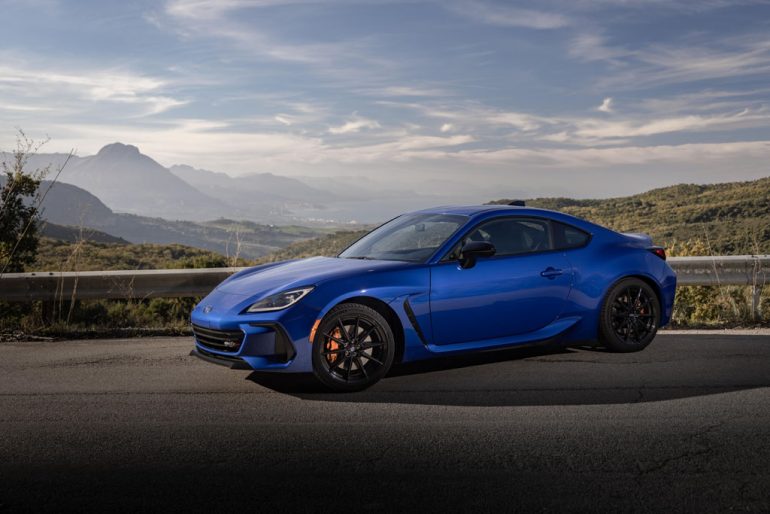
The Subaru BRZ, alongside its similar Toyota GR86 counterpart, has stood the test of time during its 12-plus years of existence as one of the only affordable rear-wheel-drive sports cars around. For the 2024 model year, Subaru brings us back a familiar trim from years ago, the BRZ tS, which stands for ‘tuned by STi.’ Instead of being a full-on STi model, the new BRZ tS is Subaru’s method for giving the small sports car some added performance abilities without going too far to lose its unique, safe, and fun characteristics.
While there’s been a continual ask from enthusiasts for more power out of the Subaru BRZ (and the Toyota GR86), the powers that be haven’t answered back with a lot, such as the form of a turbocharged engine – that would’ve been nice. However, the BRZ did get a slight increase in power for the 2022 model year with a new 2.4-liter horizontally opposed (boxer) engine, now giving us a total of 228 horsepower and 184 lb-ft of torque. That bit of extra power over the older 2.0-liter engine’s 205 horsepower and 156 lb-ft of torque is welcomed as there’s more to appreciate in the lightweight (2,847-pound curb weight) rear-wheel-drive package.
Also, don’t forget that you can get discounted new car pricing with a free quote through qualified local dealer partners.
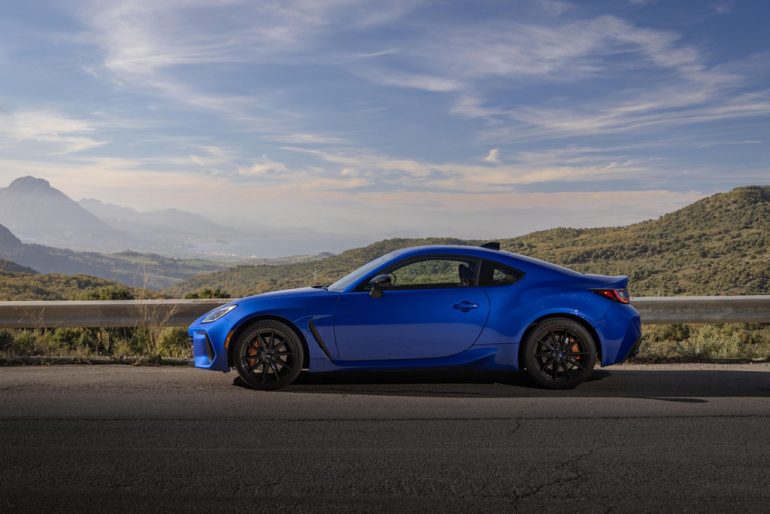
The new BRZ tS is somewhat of a rarity in that it’s a vehicle that you can push hard without too much of a worry about insurance companies getting a dreadful call. A vehicle that begs you to wring it out time after time – and with a 6-speed manual transmission in my test vehicle, the only way the BRZ tS comes, there’s an appreciation of an old-school analog feeling that you’d be hard-pressed to find in but just a couple of other new vehicles on the market. The extremely low center of gravity and retuned front suspension aid in these abilities with the BRZ tS. For the front end, the Hitachi dampers are exclusive to the tS model, giving you a slightly different feeling for turn-ins and placing an added load on the front. Moreover, the tS’ Brembo brake calipers, 4-piston fronts, and two-piston rears, do an exceptional job of stopping while the Michelin Pilot Sport 4S tires wrapping 18-inch wheels all help in the BRZ tS overall performance. The braking feel is good, but there’s not much braking boost where the pedal does require extra effort for heavy braking compared to other sports cars.
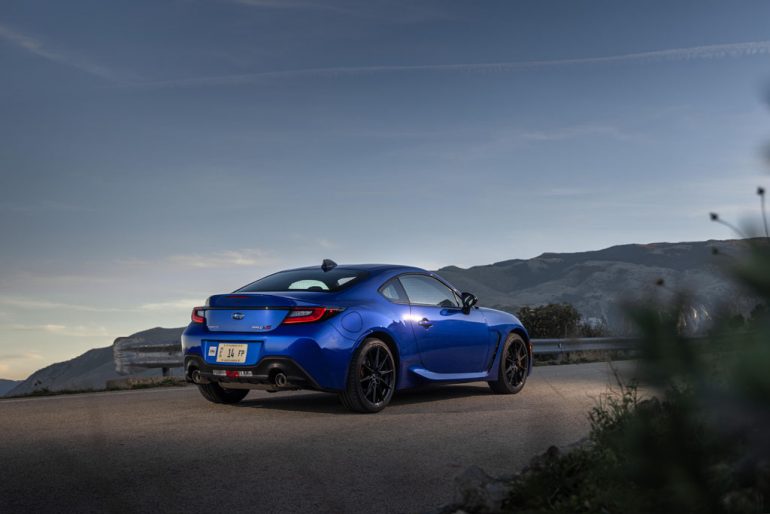
The steering response is pretty good, but there’s a bothersome trait where the steering drifts and never returns to the center from any slight off-center movement when at speed. Otherwise, there’s a respected driving characteristic in the BRZ tS, along with you knowing exactly where your front wheels are with the outer humps in the hood line. The clutch travel is shorter than most, and the shifter is mostly direct in its feeling through the gates.
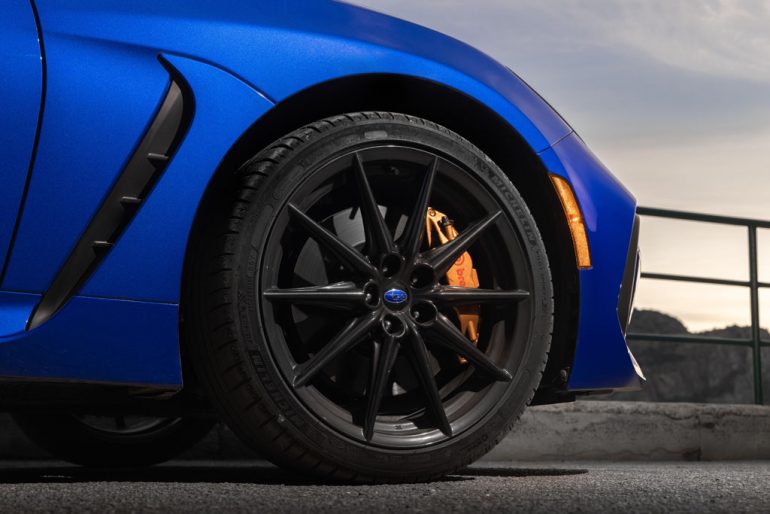
There’s a lot to appreciate in the BRZ tS over other trims, which is mostly uncovered when you push the BRZ tS hard, which it often welcomes. In fact, at times, the BRZ tS feels like it is on rails until you get to kick the rear end out when fully disabling traction and stability control. While there’s not an abundance of power to play with, there’s just enough for added fun over previous years of the BRZ that had the less powerful engine. Zero to 60 mph now clips off in just 5.8 seconds, making the tS the quickest BRZ yet.
The fuel economy is somewhat disappointing for a 4-cylinder, lightweight vehicle with the EPA estimates of 20 mpg city, 27 mpg highway, and 22 mpg combined. Though, I saw 30 mpg consistently traveling around 60 to 65 mph down back highway roads. It was not until I jumped on the Interstate traveling just above the posted 70 mph limit that the mpg dropped to nearly match the 27 mpg estimate.
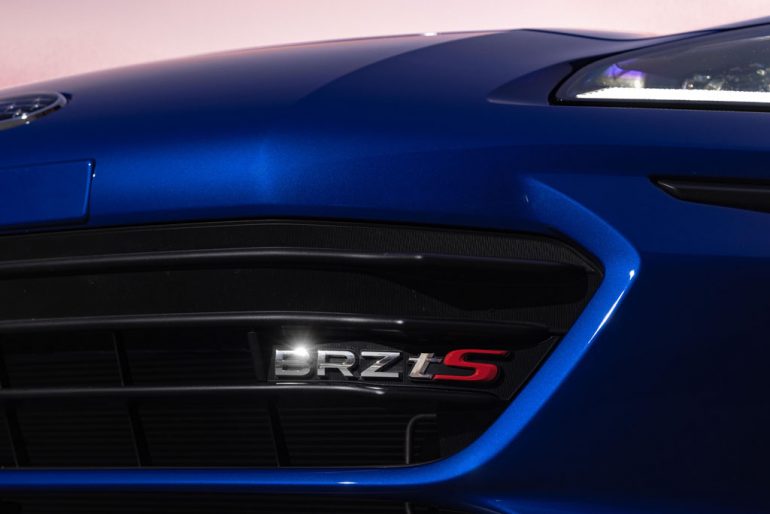
The cabin of the BRZ is on the small side but surprisingly accommodating up front for even someone as tall as me at 6-foot 3 inches. The manual-adjusted front seats have a vast amount of travel and prove to be rather comfy on longer trips. The front heated seats also look the part for the sporty BRZ tS with the Ultrasuede trim and perforation with the blue accents and stitching. The back seats are nearly useless unless you have a small child to sit back there in a pinch. Some child car seats will fit in the back, but most will want to try a test fit before committing to such.

The BRZ still utilizes a rather simplistic infotainment setup using Subaru’s Starlink fed through an 8-inch touchscreen. The system has USB-connected Apple CarPlay and Android Auto integration and is very straightforward in its operation with a minimalistic setup. The automatic dual-zone climate control is also simple in its operation, with three dials and a set of physical buttons just below.
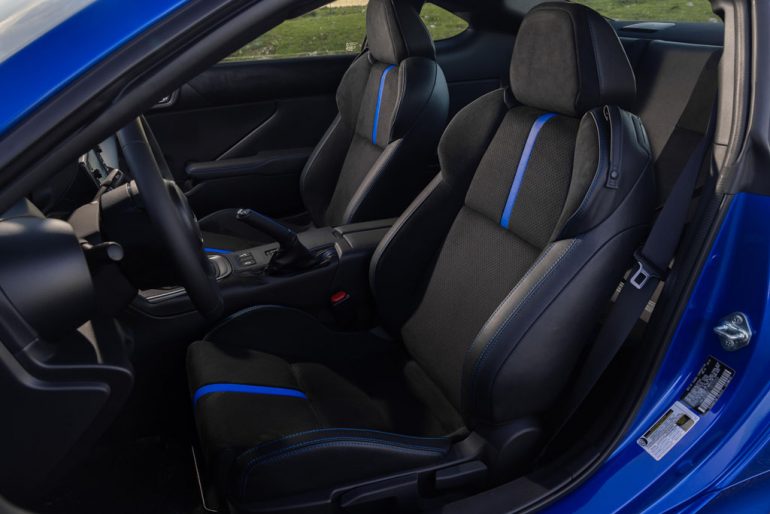
Subaru now equips the BRZ with its latest EyeSight safety suite system and a bevy of active safety features, which include forward collision warning/emergency braking, lane departure warning/mitigation, blind-spot monitors, and reverse automatic braking.
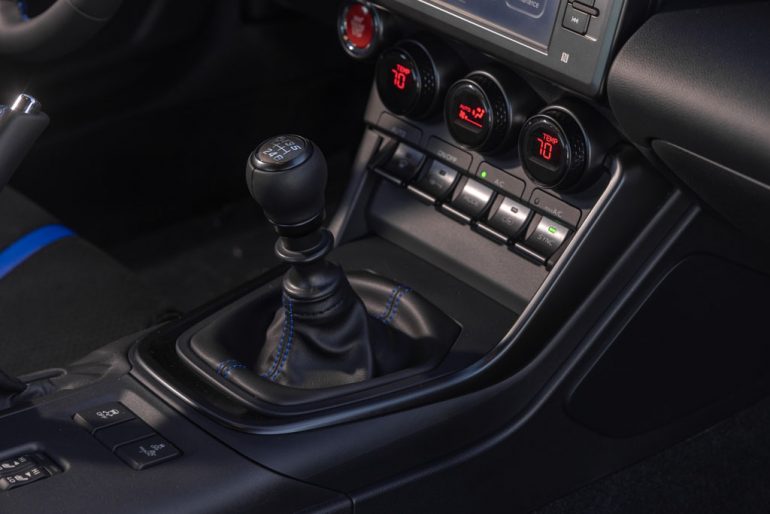
The Subaru BRZ has, in a way, grown since its inception, and the pricing reflects this. For example, it now starts at $30,195 before any fees or options. Moving up to the BRZ tS, you’ll expect to pay the price of my test vehicle, which comes in at $36,465, which includes a destination and delivery fee of $1,120, still a respectable price for getting into a manual transmission rear-wheel-drive sports car.
